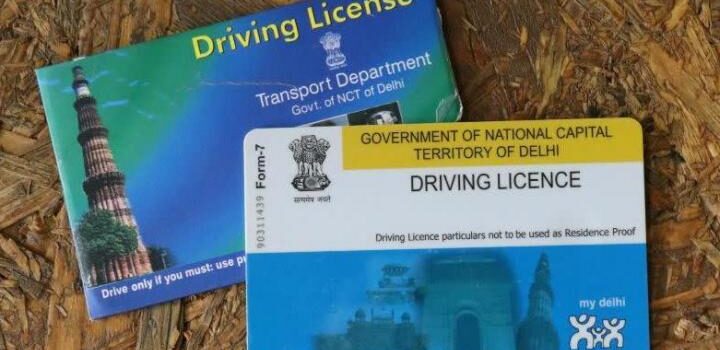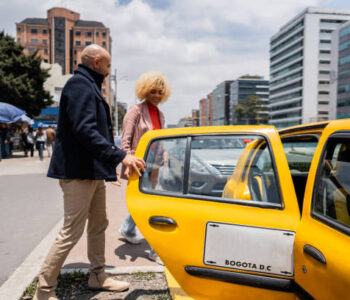 Automotive
Automotive
Latest Changes in Driving Licence Application Process
The process of obtaining a driving licence in India has undergone several changes in recent years. With the introduction of digitalization and policy updates by the Ministry of Road Transport and Highways (MoRTH), applicants can now experience a more streamlined and hassle-free process. These changes aim to reduce paperwork, enhance transparency, and make it easier for individuals to obtain their licences without unnecessary delays.
Online Application Process for Driving Licence
The traditional method of visiting Regional Transport Offices (RTOs) for every step of the driving licence application has been replaced with an efficient online process. Now, applicants can complete most formalities digitally, minimizing the need for physical visits.
1. Application Submission Online
Applicants can now apply for a driving licence through the Parivahan Sewa portal. The steps include:
- Registering on the website and selecting the type of licence (learner’s, permanent, or commercial)
- Filling out personal and vehicle-related details
- Uploading necessary documents such as identity proof, address proof, and age proof
- Paying the application fee online
2. Online Slot Booking for Driving Tests
To ensure better time management and reduce long queues at RTOs, applicants can now schedule their driving tests online. This update has significantly cut down waiting times and made the process more structured.
3. Digital Document Submission
Instead of carrying multiple hard copies, applicants can now upload their documents digitally. Aadhaar authentication is also integrated into the process, further simplifying verification.
Changes in Learner’s Licence Issuance
A major reform in the learner’s licence process is the option to take the theoretical test online from home. This has eliminated the need for applicants to visit RTOs for the written examination. Key points include:
- Availability of mock tests for preparation
- AI-based monitoring to prevent malpractices
- Instant results for quicker processing
Driving Test Modifications
Driving tests remain a crucial part of the application process. Recent changes ensure stricter evaluation criteria and fair assessments.
1. Automated Driving Test Tracks
Several RTOs have now implemented automated test tracks to evaluate driving skills with precision. These tracks use:
- Sensors to assess vehicle control
- Cameras to monitor lane discipline and parking skills
- Automated grading systems for unbiased results
2. Stricter Evaluation Criteria
Applicants are now required to demonstrate better control over vehicles, proper use of signals, and adherence to traffic rules. Any errors during the test can lead to immediate disqualification, ensuring that only competent drivers receive licences.
Online Driving Licence Check and Status Updates
Tracking the status of a licence application is now simpler with online portals. Applicants can perform a driving licence check online to stay updated on their application progress. The key features include:
- Instant application status updates
- Notifications via SMS and email
- Estimated timelines for approval and issuance
Contactless Services for Licence Renewal
Licence renewal services have also been digitized to minimize physical interactions at RTOs. Applicants can now:
- Apply for renewal online
- Upload required documents digitally
- Pay fees through secure payment gateways
For eligible applicants, a renewed licence can be issued without requiring a physical driving test.
Digital Driving Licence and mParivahan App
To reduce dependency on physical copies, digital licences are now accepted across India. Users can:
- Download and store their driving licences in the mParivahan app
- Show digital versions to traffic authorities when required
- Link their licence with Aadhaar for authentication
New Initiatives for Road Safety and Compliance
Apart from making the licensing process more convenient, the government has introduced additional measures to improve road safety. These include:
- Stricter penalties for traffic violations
- Mandatory refresher courses for repeat offenders
- Encouraging eco-friendly and electric vehicles through special licensing policies
- Introduction of smart cards for driving licences, enhancing security and reducing fraud
- Biometric verification for applicants to ensure identity accuracy and prevent duplication
Future Enhancements in Driving Licence Services
The Indian government is continuously working on further enhancements to streamline the driving licence application process. Upcoming improvements include:
- AI-powered road safety assessments for licence applicants
- Integration of blockchain technology to prevent forgery and ensure secure document handling
- Faster grievance redressal mechanisms through online portals
- Real-time tracking of driving test results and licence issuance status
Additionally, state governments are implementing region-specific measures to make the process even smoother. The aim is to create a unified, efficient, and fraud-free system that enhances road safety while simplifying access to essential services.
Conclusion
The recent changes in the driving licence application process have made obtaining and managing a licence more convenient than ever. With online applications, digital verification, and automated driving tests, the system is now more transparent and efficient. Additionally, tools like driving licence check online enable users to track their applications seamlessly. These advancements not only save time but also improve road safety by ensuring that only qualified individuals receive driving licences. The continued digital transformation of transport services in India promises a hassle-free experience for all applicants. As technology progresses, further enhancements are expected, ensuring an even smoother experience for future applicants. By embracing these innovations, the country is moving toward a more secure, efficient, and digitalized transport infrastructure.









